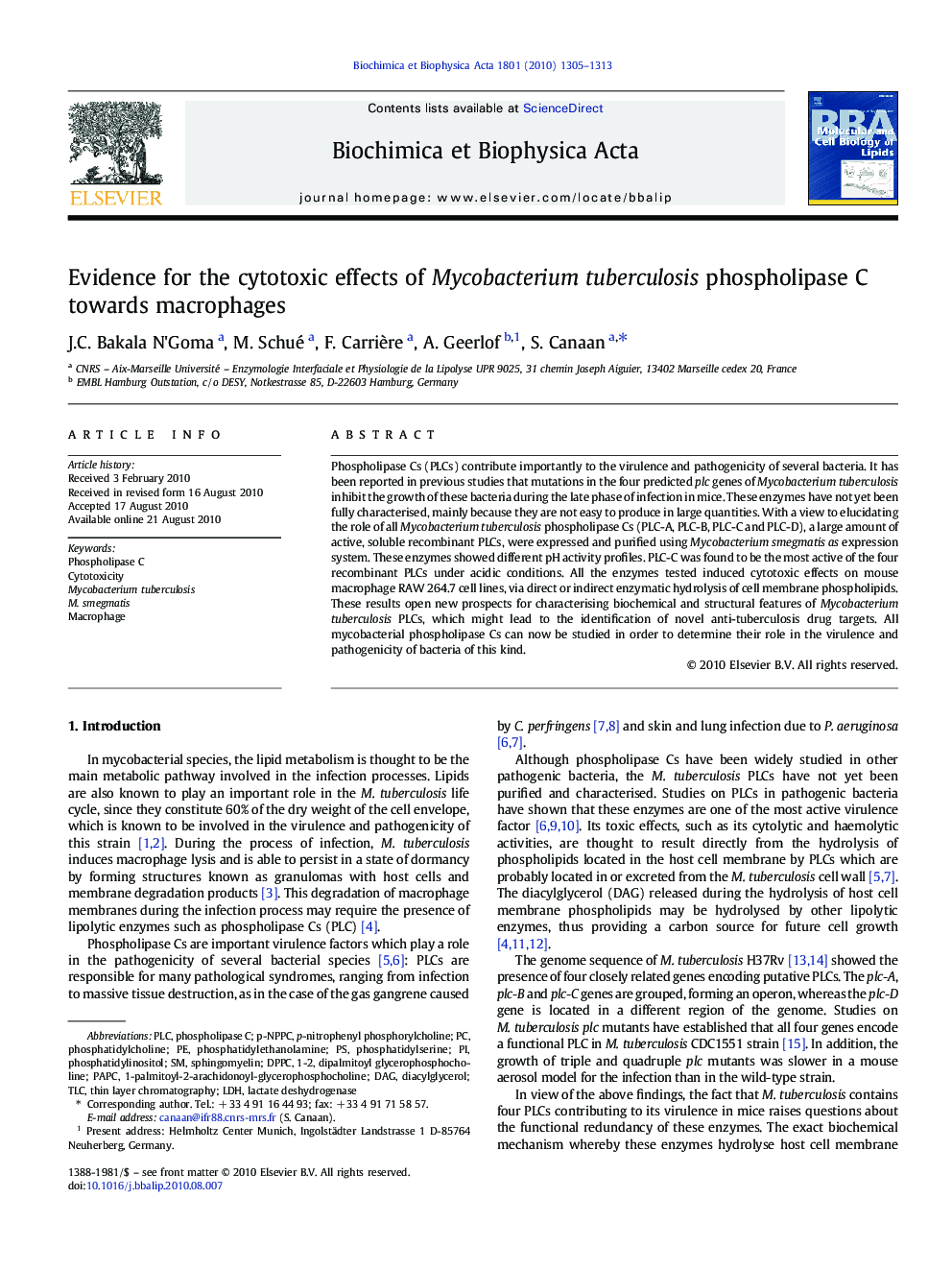| Article ID | Journal | Published Year | Pages | File Type |
|---|---|---|---|---|
| 1949638 | Biochimica et Biophysica Acta (BBA) - Molecular and Cell Biology of Lipids | 2010 | 9 Pages |
Phospholipase Cs (PLCs) contribute importantly to the virulence and pathogenicity of several bacteria. It has been reported in previous studies that mutations in the four predicted plc genes of Mycobacterium tuberculosis inhibit the growth of these bacteria during the late phase of infection in mice. These enzymes have not yet been fully characterised, mainly because they are not easy to produce in large quantities. With a view to elucidating the role of all Mycobacterium tuberculosis phospholipase Cs (PLC-A, PLC-B, PLC-C and PLC-D), a large amount of active, soluble recombinant PLCs, were expressed and purified using Mycobacterium smegmatis as expression system. These enzymes showed different pH activity profiles. PLC-C was found to be the most active of the four recombinant PLCs under acidic conditions. All the enzymes tested induced cytotoxic effects on mouse macrophage RAW 264.7 cell lines, via direct or indirect enzymatic hydrolysis of cell membrane phospholipids. These results open new prospects for characterising biochemical and structural features of Mycobacterium tuberculosis PLCs, which might lead to the identification of novel anti-tuberculosis drug targets. All mycobacterial phospholipase Cs can now be studied in order to determine their role in the virulence and pathogenicity of bacteria of this kind.
Research Highlights►Cloning, expression and purification of 4 phospholipase Cs from M. tuberculosis. ►In contrast to other known PLCs, rPLCs from M. tuberculosis are not calcium-dependent and do not possess an haemolytic activity. ►rPLCs have a cytotoxic effect on macrophage cells.
